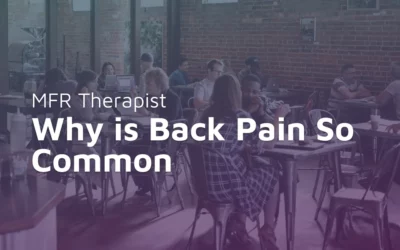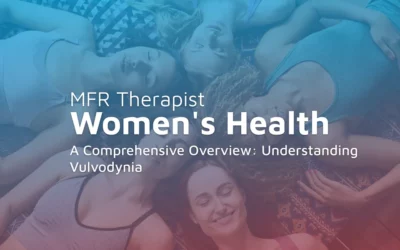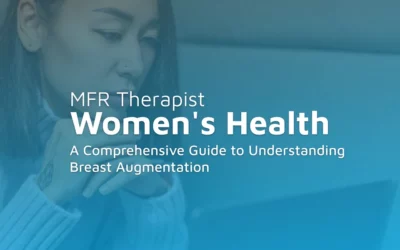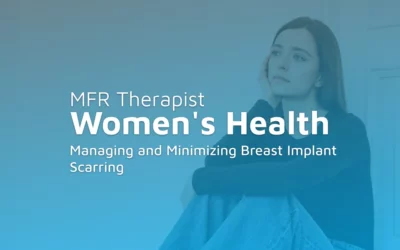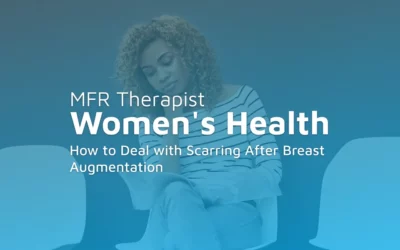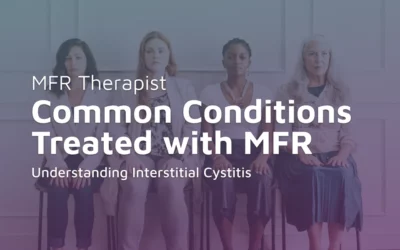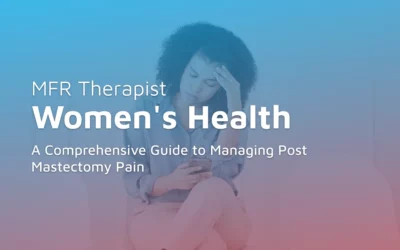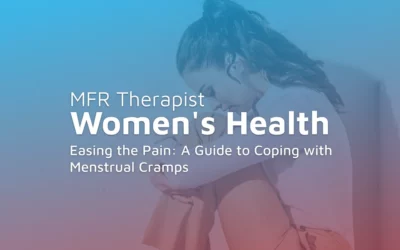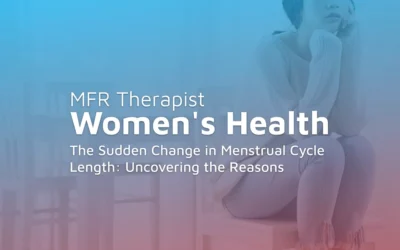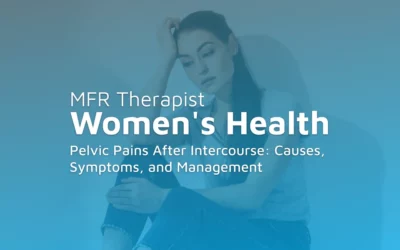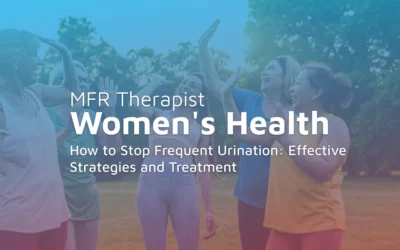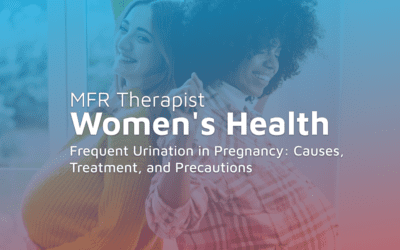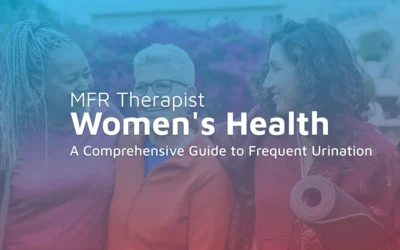Conditions treated with Myofascial Release
Welcome to our comprehensive library, a dedicated resource for patients exploring the healing possibilities of myofascial release. Here, you’ll find a wide array of articles covering successful treatments for conditions ranging from back and joint pain to specific women’s health issues like vulvodynia, and even including techniques for vagus nerve regulation. Each piece is curated to offer insights into how myofascial release can provide relief and improve quality of life for those suffering from chronic pain or discomfort. Dive into our collection to discover how this therapeutic approach can be tailored to meet your individual health needs and guide you on the path to recovery.
Common Conditions Seen by an MFR Therapist
Back Pain
The Top Causes of Back Pain in Women
Back pain can be caused by a variety of different factors. Some causes of back pain are more common in women. Keep reading to learn about three common causes of back pain in women and tips to help reduce back pain.Back-pain associated with pregnancyPregnancy causes...
Why is Back Pain So Common
Almost everyone knows at least one person who suffers from back pain, you may have it yourself. So why is back pain so common? The answer is simple; we sit too much. Think of your typical day. How many hours do you spend sitting? According to a 2016 study published in...
Understanding Lower Back Pain and Sleep
Lower back pain is a prevalent issue that can affect anyone, regardless of gender. The anatomy of the lower back, particularly the lumbar region, is crucial. It is designed to support a significant portion of our body weight. This function, however, comes at a cost;...
The Ultimate Guide to Back Pain Relief
Understanding back pain: Causes and symptomsUnderstanding the root cause of your back pain is the first step towards finding relief. This common ailment can be attributed to a myriad of factors, such as muscle or ligament strain, bulging or ruptured discs, irritation...
Headaches
It’s Not All in Your Head: The Connection Between Your Neck, Headaches, and Migraines
Long hours in front of a desk, constantly looking down at phones, slouching into the couch to watch tv, and many more daily habits have a huge impact on your neck and back. It’s no wonder upwards of three-fourths of adults between the ages of 18 and 65 years have had...
How MFR Therapy Can Help with Headaches Behind the Left Eye
Understanding headaches behind the left eyeHeadaches behind the left eye can be triggered by a variety of factors. One factor is hormonal changes, particularly in women during menstrual periods, pregnancy, and menopause. Consumption of certain substances such as...
Whiplash
Coping with Whiplash Injuries: A Comprehensive Guide
What is a whiplash injury? Whiplash is typically a result of sudden, forceful back-and-forth motion of the neck, akin to the cracking of a whip, hence the name 'whiplash'. This type of movement can injure the soft tissues such as muscles, ligaments, and tendons in the...
Neck Pain
It’s Not All in Your Head: The Connection Between Your Neck, Headaches, and Migraines
Long hours in front of a desk, constantly looking down at phones, slouching into the couch to watch tv, and many more daily habits have a huge impact on your neck and back. It’s no wonder upwards of three-fourths of adults between the ages of 18 and 65 years have had...
Chronic Pain
Treating Chronic Pain with Myofascial Release Therapy
When we experience pain, we are often drawn to its physical symptoms. Words like achey, burning, stabbing, and shooting come to mind. We also tend to think about what limitations the pain brings to our physical bodies. We may describe how we can no longer sit for long...
It’s Not All in Your Head: The Connection Between Your Neck, Headaches, and Migraines
Long hours in front of a desk, constantly looking down at phones, slouching into the couch to watch tv, and many more daily habits have a huge impact on your neck and back. It’s no wonder upwards of three-fourths of adults between the ages of 18 and 65 years have had...
Migraines
It’s Not All in Your Head: The Connection Between Your Neck, Headaches, and Migraines
Long hours in front of a desk, constantly looking down at phones, slouching into the couch to watch tv, and many more daily habits have a huge impact on your neck and back. It’s no wonder upwards of three-fourths of adults between the ages of 18 and 65 years have had...
Women’s Health Articles
Vulvodynia
A Comprehensive Overview: Understanding Vulvodynia
What is vulvodynia?Vulvodynia may be a term that is unfamiliar to you. Yet, it represents a significant and challenging condition for those who experience it. By definition, vulvodynia is chronic pain in the vaginal region. More specifically, it is pain located in the...
Living Better with Vulvodynia: Lifestyle Adjustments for Relief
Vulvodynia is a chronic condition characterized by discomfort or pain in the vulva, the external part of the female genitalia. The pain associated with this condition is not confined to a specific disease or infection but is a musculoskeletal, neuropathic condition....
Vulvodynia Treatments: An In-Depth Guide
What is vulvodynia?Vulvodynia is a chronic vulvar pain condition that lasts for at least three months and has no clear identifiable cause. This condition is often misunderstood and can drastically affect a woman's quality of life, causing discomfort during sexual...
Painful Scars
A Comprehensive Guide to Understanding Breast Augmentation
Breast augmentation is a surgical procedure designed to enhance the size, shape, and symmetry of the breasts. This is achieved by placing silicone or saline implants under the breast tissue or chest muscles. A patient's overall health is a critical factor that can...
Managing and Minimizing Breast Implant Scarring
What is breast implant scarring?Breast implant scarring is an inherent aspect of the healing process following a breast augmentation procedure. It occurs as the body's innate reaction to the surgical incisions required to insert the implants. The skin and underlying...
How to Deal with Scarring After Breast Augmentation
What is breast augmentation?Breast augmentation, also known as mammoplasty, is a surgical procedure that enhances the size and shape of a woman's breasts. It involves the placement of breast implants under the breast tissue or chest muscles to increase the size of the...
Interstitial Cystitis
Understanding Interstitial Cystitis
Interstitial cystitis (IC), also commonly referred to as bladder pain syndrome (BPS), is a long-standing or recurrent chronic condition that causes inflammation or irritation of the bladder wall. This inflammation may lead to scarring and a stiffer bladder, which can...
Mastectomy Pain
A Comprehensive Guide to Managing Post Mastectomy Pain
Definition of PMPSPost-Mastectomy Pain Syndrome (PMPS) is a medical term referring to chronic pain experienced after mastectomy surgery, persisting beyond three months post-surgery. It is a distinct medical condition separate from complex regional pain syndrome or...
Menstrual Problems
Easing the Pain: A Guide to Coping with Menstrual Cramps
Menstruation is a natural bodily process that involves a series of hormonal changes. It starts with the menstrual phase where the old uterine lining is shed, followed by the follicular phase when the body prepares for ovulation. The ovulation phase is when the ovaries...
The Sudden Change in Menstrual Cycle Length: Uncovering the Reasons
Brief overview of the menstrual cycleThe menstrual cycle is a vital aspect of a woman's health, marking a recurring process that prepares the body for a potential pregnancy. This cyclical event is instigated by fluctuating hormone levels and encompasses several...
Painful Intercourse
Navigating Pain After Intimacy
Intercourse is an intimate act that brings about a range of experiences, leading to different physical and emotional responses in the human body. One of the experiences that some individuals face after sex is discomfort or pain. This post-sex pain can be a result of...
Pelvic Pains After Intercourse: Causes, Symptoms, and Management
Pelvic pain is a complex symptom that manifests in the lower abdominal area and may be related to various conditions or dysfunctions. It can appear acutely, be chronic in nature, or fluctuate cyclically, often associated with menstrual cycles in females. This pain can...
A Comprehensive Guide to Understanding Painful Intercourse
Painful intercourse, also known as dyspareunia, is a condition that impacts many individuals, causing discomfort or pain during sexual activity. This pain can occur before, during, or after intercourse and can be located in the pelvic region, the genital area, or...
Urinary Frequency
How to Stop Frequent Urination: Effective Strategies and Treatment
What is frequent urination?Frequent urination, or polyuria, is the need to urinate more often than what is typically necessary for a healthy person. Many individuals may not realize that the average bladder can comfortably hold urine for two to five hours, with...
Frequent Urination in Pregnancy: Causes, Treatment, and Precautions
Frequent urination during pregnancy is a prevalent symptom that affects a majority of expectant mothers. This condition is characterized by an increase in how often a woman feels the need to urinate. It typically begins in the first trimester and can intensify as the...
A Comprehensive Guide to Frequent Urination
Frequent urination is an issue that affects many individuals, disrupting their daily lives and overall wellness. This guide offers insight into frequent urination, its causes, symptoms, and treatment options. All of the above will be discussed in detail...
Problematic Breast Implant/Reduction Scars
The Journey of Breast Reduction Scars Healing Process
Understanding breast reduction surgeryBreast reduction surgery, also known as reduction mammoplasty, is a procedure designed to help women who are...
Effective Ways to Treat and Manage Breast Reduction Scars
Breast reduction surgery is a procedure many women consider to alleviate physical discomfort and improve their appearance. It can greatly enhance...
Coccydynia
Myofascial Release vs. Traditional Massage: What’s the Difference?
Myofascial release and massage therapyIn the field of bodywork, there is a wide range of hands-on care techniques. Most of these techniques focus on...
How Fascia Impacts the Health of Your Vagus Nerve
Connections The human body has connections between all its systems. Our skin, muscles, organs, nerves, and brain constantly communicate and...
It’s Not All in Your Head: The Connection Between Your Neck, Headaches, and Migraines
Long hours in front of a desk, constantly looking down at phones, slouching into the couch to watch tv, and many more daily habits have a huge...
Endometriosis
What You Need to Know about Stage 4 Endometriosis
Stage 4 endometriosis, or severe endometriosis, is the most advanced stage of this condition. It means that endometrial tissue, which is similar to the lining of the uterus, is growing in multiple places outside the uterus. This could include organs in the pelvic or...
Infertility Problems
Navigating the Complex World of Infertility Treatments
Infertility is a distressing issue that affects many people worldwide. It is typically defined as the inability to conceive after a year of regular unprotected intercourse or the inability to carry pregnancies to term. There are many potential causes of infertility,...
Urinary Urgency
How to Stop Frequent Urination: Effective Strategies and Treatment
What is frequent urination?Frequent urination, or polyuria, is the need to urinate more often than what is typically necessary for a healthy person. Many individuals may not realize that the average bladder can comfortably hold urine for two to five hours, with...
Frequent Urination in Pregnancy: Causes, Treatment, and Precautions
Frequent urination during pregnancy is a prevalent symptom that affects a majority of expectant mothers. This condition is characterized by an increase in how often a woman feels the need to urinate. It typically begins in the first trimester and can intensify as the...
A Comprehensive Guide to Frequent Urination
Frequent urination is an issue that affects many individuals, disrupting their daily lives and overall wellness. This guide offers insight into frequent urination, its causes, symptoms, and treatment options. All of the above will be discussed in detail...

John F. Barnes, PT has written numerous articles in national publications documenting the benefits of Myofascial Release.

Join us as we journey into the realms of fascia, exploring its structure, its role in health, and the impact on your day-to-day life
This site was developed by Dr. Mark Barnes to help people find the best MFR therapist for their unique needs. We provide an easy way to search for MFR trained therapists, free of cost, and without the frustration of popups and advertisements.
This site lists only therapists trained on the John F. Barnes technique, giving you, the patient, assurance that you are being treated by the best set of therapists who continually maintain their education in Myofascial Release.
Our Site
Contact Us
Legal


